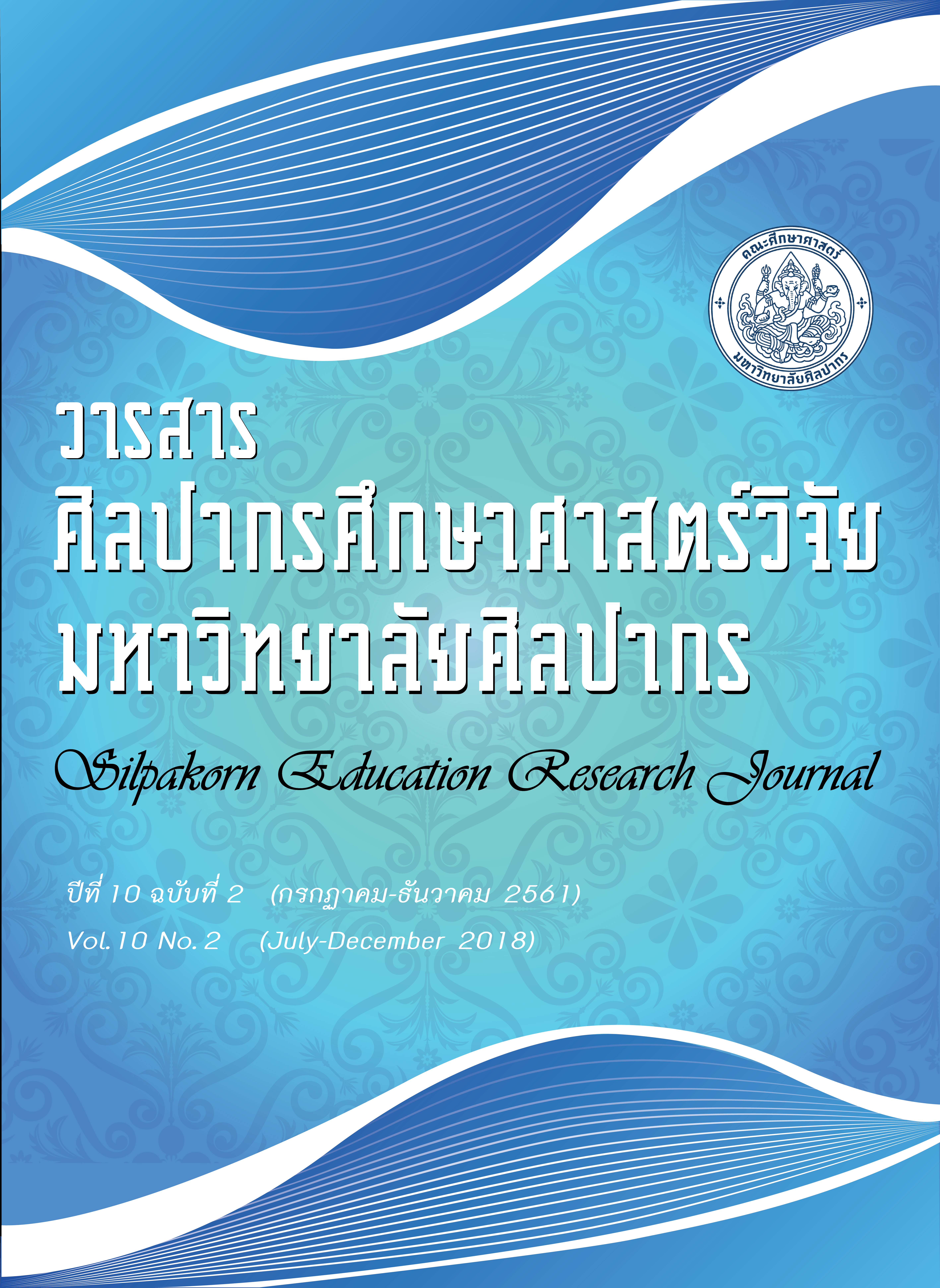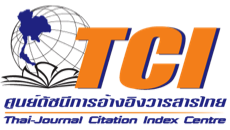การพัฒนารูปแบบการเรียนแบบผสมผสานการอ่านแบบเน้นมโนทัศน์ เพื่อส่งเสริมความสามารถในการอ่านภาษาอังกฤษและการใช้กลยุทธ์การอ่าน สำหรับนักศึกษาระดับปริญญาตรี (The Development of Blended Learning and Concept-Oriented Reading Instructional Model to Enhance Reading Ability and Strategy Use for Undergraduate Students)
คำสำคัญ:
รูปแบบการสอน, การเรียนแบบผสมผสาน, การอ่านแบบเน้นมโนทัศน์, กลยุทธ์การอ่าน, Instructional Model, Blended Learning, Concept-Oriented Reading, Reading Strategiesบทคัดย่อ
บทคัดย่อ
การศึกษาครั้งนี้มีวัตถุประสงค์ 1) เพื่อพัฒนาและหาประสิทธิภาพของรูปแบบการเรียนแบบผสมผสานการอ่านแบบเน้นมโนทัศน์ และ 2) เพื่อประเมินประสิทธิผลของการใช้รูปแบบ กลุ่มตัวอย่างเป็นนักศึกษาระดับปริญญาตรี คณะวิทยาการจัดการ มหาวิทยาลัยศิลปากร จำนวน 24 คน เครื่องมือที่ใช้ในการวิจัย ประกอบด้วย รูปแบบการเรียนแบบผสมผสานการอ่านแบบเน้นมโนทัศน์ คู่มือการใช้รูปแบบ แผนการจัดการเรียนรู้ แบบทดสอบความสามารถในการอ่านภาษาอังกฤษ แบบสำรวจการใช้กลยุทธ์การอ่าน แบบบันทึกการเรียนรู้ แฟ้มสะสมงานกลุ่ม และแบบสนทนากลุ่มสอบถามความคิดเห็นผู้เรียนที่มีต่อการเรียนด้วยรูปแบบ
ผลการวิจัย พบว่า
1. รูปแบบชื่อ PECIR Blended Model มี 4 องค์ประกอบ ได้แก่ 1) หลักการและวัตถุประสงค์ 2) กระบวนการจัดการเรียนรู้ 3) เงื่อนไขการนำรูปแบบไปใช้ และ4) การวัดและประเมินผล กระบวนการจัดการเรียนรู้มี 5 ขั้นตอน คือ 1) ขั้นก่อนการสำรวจ (Pre-exploring) 2) ขั้นสำรวจข้อมูล (Exploring) 3) ขั้นเข้าใจข้อมูล (Comprehending) 4) ขั้นบูรณาการความรู้ (Integrating) และ 5) ขั้นแสดงความรู้ (Representing) ประสิทธิภาพของรูปแบบเท่ากับ 81.72/80.97
2. ประสิทธิผลของรูปแบบ พบว่า 2.1) ความสามารถในการอ่านภาษาอังกฤษของผู้เรียนสูงกว่าก่อนเรียน อย่างมีนัยสำคัญทางสถิติที่ระดับ .01 2.2) ผู้เรียนมีพัฒนาการความสามารถในการอ่านภาษาอังกฤษ 2.3) ผู้เรียนมีความสามารถใช้กลยุทธ์การอ่าน สูงกว่าก่อนเรียน อย่างมีนัยสำคัญทางสถิติที่ระดับ .05 และ2.4) ผู้เรียนพึงพอใจต่อการเรียนด้วยรูปแบบ
Abstract
The purposes of this research were: 1) to develop and to determine the efficiency of the blended learning and concept-oriented reading instructional model and 2) to evaluate the effectiveness of the instructional model. Twenty-four undergraduates from Faculty of Management Science, Silpakorn University were selected as research samples. The research instruments consisted of the blended learning and concept-oriented reading instructional model, a hanbook for the instructional model, lesson plans, the reading comprehension tests, the survey of reading strategy use, the learning log, the group portfolio, and the focus group interviewing questions.
The research findings revealed as follows:
1. The instructional model called PECIR Blended Model comprised four elements: 1) principle and objectives; 2) learning process; 3) learning factors; and 4) evaluation. The learning process was composed of five stages: 1) Pre-exploring: P; 2) Exploring: E; 3) Comprehending: C; 4) Integrating: I; and 5) Representing: R. The efficiency of the PECIR Blended Model was 81.72/80.97.
2. The effectiveness of the instructional model indicated that 2.1) the students’ English reading ability after using of the PECIR Blended Model was significantly higher at the .01 level; 2.2) the students’ English reading ability during the implement was highly improved; 2.3) the students’ abilities to use reading strategies after using of the PECIR Blended Model were significantly higher at the .05 level; and 2.4) and the students were satisfied with learning reading English through the PECIR Blended Model.




